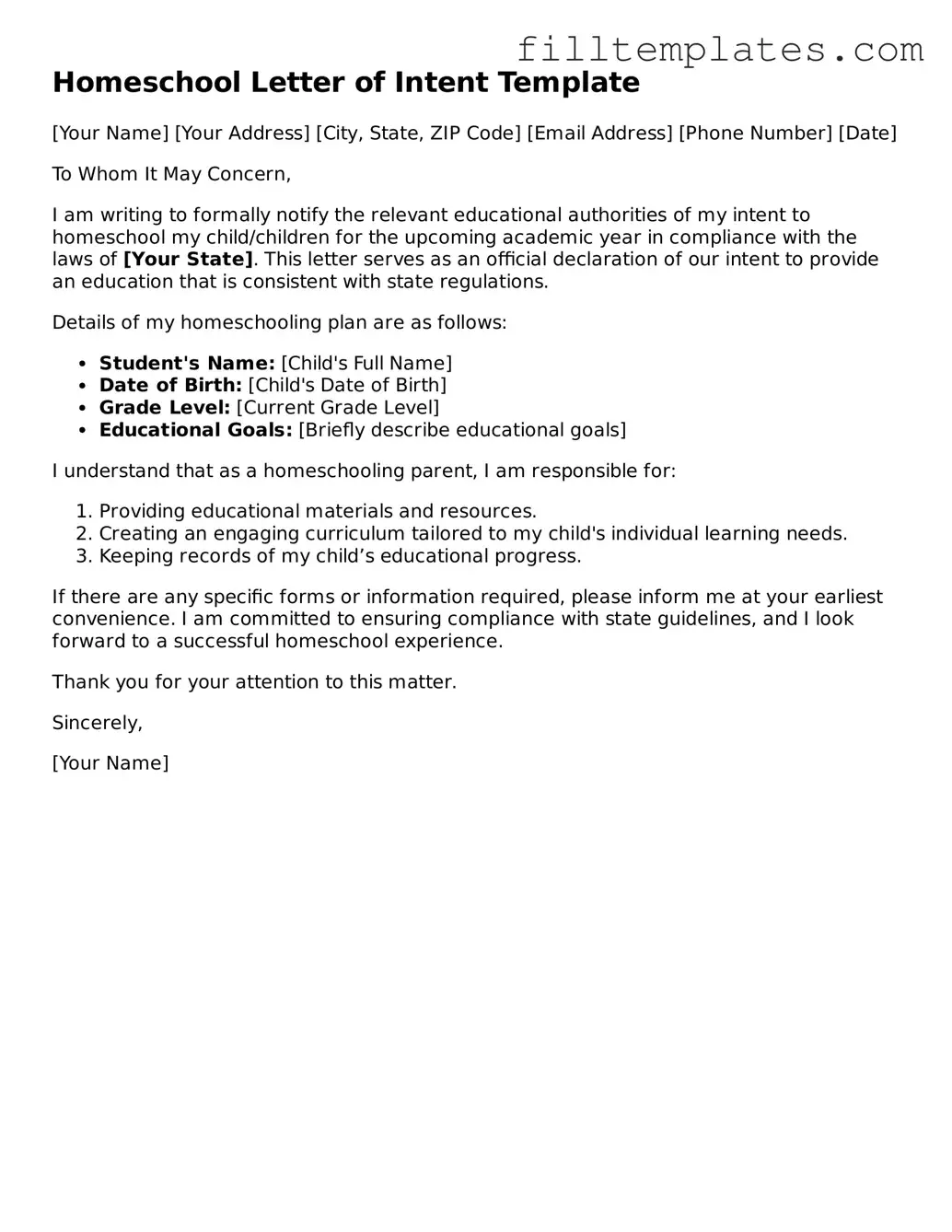Homeschool Letter of Intent Template
[Your Name]
[Your Address]
[City, State, ZIP Code]
[Email Address]
[Phone Number]
[Date]
To Whom It May Concern,
I am writing to formally notify the relevant educational authorities of my intent to homeschool my child/children for the upcoming academic year in compliance with the laws of [Your State]. This letter serves as an official declaration of our intent to provide an education that is consistent with state regulations.
Details of my homeschooling plan are as follows:
- Student's Name: [Child's Full Name]
- Date of Birth: [Child's Date of Birth]
- Grade Level: [Current Grade Level]
- Educational Goals: [Briefly describe educational goals]
I understand that as a homeschooling parent, I am responsible for:
- Providing educational materials and resources.
- Creating an engaging curriculum tailored to my child's individual learning needs.
- Keeping records of my child’s educational progress.
If there are any specific forms or information required, please inform me at your earliest convenience. I am committed to ensuring compliance with state guidelines, and I look forward to a successful homeschool experience.
Thank you for your attention to this matter.
Sincerely,
[Your Name]
